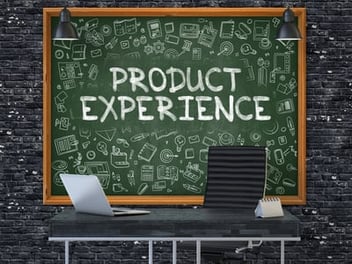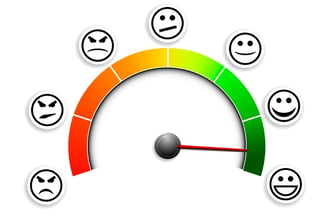The fast pace of change in business and technology isn’t slowing down anytime soon. In fact, it seems to be ramping up with new AI, productivity tools and a stronger need for cybersecurity compliance.
Business executives with aggressive goals for their company have one question on their minds: how do they use technology to leap ahead of their competitors?
Companies that find ways to innovatively use technology instead of looking at IT as an operational commodity are going to have more opportunities for revenue growth, employee retention and customer satisfaction. Finding the technology that’ll transform business isn’t necessarily the hard part – it’s what you do with the technology that makes a difference.
Read now: How to Upgrade and Integrate Your Business' Technology
Change Your Perspective on IT
Many business leaders view IT as an operational expense, so they buy technology like it was a commodity. This is where a shift in perspective should take place if you’re going to strategically use technology to improve your company and beat out the competition.
Technology is a tool, but anyone can get tools. I can go to the store today and get all the tools I need to build a house, but that doesn’t mean I can do that successfully – I assure you that I can’t.
The craft is in the skill of the builder, his experience and training and his insight on how to take a vision and turn it into a physical reality. It’s the same with technology.
You must think about IT strategically with the end result in mind. What do you want to build? What do you want to result to be? Then plan it out. The house builder isn’t going to arrive onsite and say “Yeah, let’s build a house today.” You’d be surprised how many businesses approach IT planning like this – there is little to no thought as to how systems are going to connect and work together. The technology user’s experience, whether it’s the customer or the employee, is an afterthought.
It's no wonder these IT investments don’t pan out.
Start with Business Needs and Big Ideas
Becoming strategic with how you use technology starts with your business needs, but it doesn’t stop there. Technology has the most impact as a differentiator when it has a big idea to build on. The big ideas can come from anywhere and everywhere in your business. It can certainly contribute ideas but where they play the best role is in developing the ways that big ideas are enabled with technology.
Once your staff starts to generate big ideas, don’t rush straight into the technology enablement step. Test ideas to see if they mesh with your organization’s vision and strategy. Keep the overriding business goals in mind as you incubate these big ideas – this assures that the innovation will be something that moves the business forward and not be innovation for innovation’s sake.
Turn Big Ideas into Competitive Advantage
- Differentiate Between Products and Services
 Commoditization is an increasing threat in so many industries because there are so many choices on the market. Buyers have not only choices but also high expectations.
Commoditization is an increasing threat in so many industries because there are so many choices on the market. Buyers have not only choices but also high expectations.
Innovative use of technology could improve a product are service, or it could be used to improve delivery resulting in greater market share and customer satisfaction.
Ask yourself: can you add another product or service to increase sales to your current customers? Are there ways to improve or package your product that would reduce costs and allow you to sell more or increase your margin? What customizations would allow you to reach a certain demographic?
Remember, big ideas about how to make your products and services don’t have to start with technology – they start with how you can become a better solution for your customers.
- Improve Customer Experience

Studies have shown that most Americans would try a new brand or company for a better customer experience. Maya Angelou said it best: “I’ve learned that people will forget what you said, people will forget what you did, but people will never forget how you made them feel.”
What feelings do customers get when they have difficulty communicating with your business or if they can’t get your service or product when they want it? Are you putting up barriers that hinder customers from getting your product or service?
Consider the Internet of Things(IoT): it provides an opportunity to connect the physical and digital worlds, and it could be a way to raise your product above the competition. The IoT is about gathering data from physical objects and using that data to create more value, so think about how you could manage the product lifecycle, trigger re-orders or send reminders or suggestions on how to use your product.
- Innovate Business Processes
 How your business processes operate affects your whole business. The people who are using the processes are probably the best people to look to for big ideas that’ll help them do their jobs faster and more effectively. Improved processes can even build trust and loyalty with your customers and help them become more profitable.
How your business processes operate affects your whole business. The people who are using the processes are probably the best people to look to for big ideas that’ll help them do their jobs faster and more effectively. Improved processes can even build trust and loyalty with your customers and help them become more profitable.
Do your customers need to view and sign documents? Do they want order status information? Would your customers like a streamlined quoting experience?
When business processes are improved, your business has more accurate data to use in decision-making. This can result in improved quality, cost savings and the ability to be more agile in a changing business landscape.
- Give Employees the Experience They Want

Most people want to do well at their jobs. Then they have the tools and resources that they need to be successful, they will become more likely to stay at your company and actively contribute to its success.
People like to use similar technology at work that they use in their personal lives, but for many people, their technology experience at work is downright painful. What if you could make your business technology as intuitive as your employees’ smartphones? The big ideas that you get from employees on how they can do their jobs better can also help you improve business processes and customer experience.
Predictable IT Needed to Execute on Technology as a Differentiator
If you try to be innovative with technology when you have a chaotic IT environment, you’ll feel like Sisyphus continually pushing that boulder up the hill. The first step toward utilizing technology as a differentiator is to have a stable IT infrastructure. For many executives, this seems like a mountain too high to climb because they experience the same IT problems over and over again – every time someone said they had a solution, it ended in disappointment, so it seems that the current IT reality will never change.
Attaining a predictable IT environment often involves an outsourced IT service to fill all the roles needed for a complete IT department. Depending on the size of the business, internal IT departments might seem cost-effective, but in reality, the skills they bring to your company are limited, and gaps expose you to inefficiencies and risks that could threaten your business’s health. The result of predictable IT is a reliable, scalable IT function that will help improve and grow your business.
IT Strategy
 Remember the guy who was going to build a house? He had a plan, and you need one, too.
Remember the guy who was going to build a house? He had a plan, and you need one, too.
IT strategy is the plan that aligns technology with business objectives. Without an IT strategy, priorities can’t be set, making costs unpredictable. Internal IT departments often fall short when it comes to developing an IT strategy. This can be two-fold: IT is managed by people who lack business experience, or the IT director hasn’t had the opportunity to join the management team to facilitate discussions about how technology can be used to advance business objectives.
The strategic thinkers on your team are going to make connections between big ideas and how they can be enabled. They’re probably already doing this in other parts of your company – so why not IT? As they collaborate with management, departments and individuals to evaluate needs and goals, they’ll develop a roadmap and budget to assess priorities and timelines to accomplish goals.
Having an IT strategy will build out the road you need to travel to build a predictable IT system so you can then enable the ideas that sharpen your competitive edge. Being strategic with It will help your company be more flexible and improve your ability to react when conditions change. All this will make you a better competitor.
Push Past Your Competition and Unleash Your Business Success with Better IT Results
In a noisy, competitive world, it takes creativity and effort to be different from everyone else. When you have a predictable IT framework and you can find ways to use technology as a differentiator, your business will benefit in multiple ways. You’ll find that your company’s potential can finally be set free.
AtThriveon, our clients come to us because they want IT strategies and services that will power their business success. We believe IT ought to provide predictable results for a predictable cost and help companies do more. Our clients receive a multitude of results: the risk of business interruption is drastically reduced, they’re able to do more business with fewer people and they can budget more predictably. We take them to come the circling whirlwind of IT issues that are holding businesses back onto a path of success where IT enables their business goals instead of holding them back.
Schedule a meeting to explore how Thriveon’s proven process for IT strategy and management can help you do more with less.

